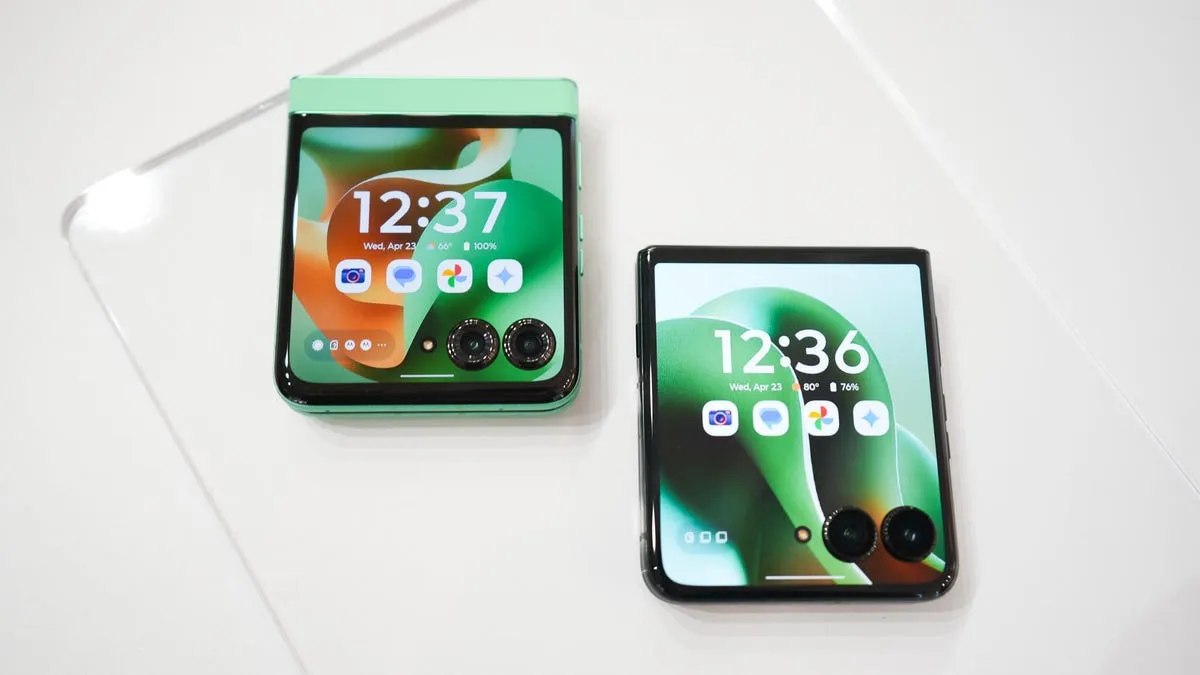
You have my attention, Motorola. In an exciting announcement, the company unveiled not one, not two, but three new Razr flip phones, including the highly anticipated 'Ultra' model. This feature-packed device is not just stylish; it comes with a hefty price tag of $1,299. Alongside this launch, Motorola Solutions is set to equip first responders with new AI-enabled body cameras, showcasing the brand's commitment to innovation across multiple sectors.
I had the opportunity to spend an intimate afternoon testing all three Razr models prior to their official launch. Despite the eye-watering price that raises questions about the state of the economy, my initial impressions were largely positive. In particular, the Razr Ultra, which I tested most extensively, has left me feeling less excited about what Samsung might unveil later this summer.
At first glance, the new Motorola Razr models may not appear dramatically different from their predecessors. They remain pocket-friendly, easily flipping open and closed with a flick of the wrist, and are available in an assortment of Pantone-validated finishes. However, the true innovations lie in the internal structure and material choices.
The most noteworthy change is the introduction of a titanium-reinforced hinge plate, which Motorola claims is four times stronger than surgical-grade stainless steel. This enhancement allows the device to withstand up to 35% more folds compared to last year's models. During my hands-on experience, I noticed a significant difference in sturdiness when comparing the 2024 Razr Plus to the new models; the former felt notably flimsy and wobbly.
The curved sides of the Razr continue to enhance the unfolding experience, making it much easier to handle than Samsung's flatter design. Additionally, the crease on the inner display—a common area of concern for foldable phones—has visibly improved. While the difference may not be strikingly obvious, you can feel the change when gliding your finger across the screen; it now forms a gentle divot, a testimony to how far flip phone technology has evolved.
While tech giants like Apple have seemingly scaled back their AI integrations in smartphones, Motorola is confidently embracing the technology. The new Razr lineup features collaborations with several AI partners, including Google, Meta, Microsoft, and Perplexity. This ambitious approach results in a unique mobile experience that adapts to the user's needs by recommending the most suitable AI service based on the on-screen task.
For instance, if you're reading an article about a new recipe and tap on the dedicated AI key, Moto AI will pop up, suggesting next steps like generating a cooking-themed playlist or saving relevant information for future reference. Moreover, users can access Perplexity's real-time search engine directly from the external display, making the Razr a strong competitor to Rabbit R1.
The Razr phones also come equipped with Motorola's suite of in-house AI tools, including Catch Me Up for summarizing notifications, Pay Attention for taking voice recordings, and Remember This, an information-recall feature similar to Microsoft's offerings. These tools have been in beta testing for months, and I am eager to see how practical and useful they will be upon their official launch.
Motorola deserves recognition for its continuous efforts to make smartphones feel less mundane. The Pantone-validated finishes on this year's Razrs offer a refreshing change in a market dominated by black and white rectangles, reminiscent of the old Moto Maker days. Although you can't customize the Razr Ultra in the same way you could with the Moto X back in 2013, you can select from a variety of colors and material finishes, including Pantone Scarab in Alcantara, Pantone Mountain Trail in FSC-certified wood, Pantone Cabaret, and Pantone Rio Red.
While each finish provides a unique aesthetic, the long-term durability of these softer materials, such as Alcantara, raises questions. After all, this is a $1,299 flip phone we're discussing. I have lingering inquiries about the Razr Ultra—specifically, whether it justifies its premium price tag and if it will inspire Samsung's upcoming Galaxy Z Flip 7 to adopt a similar approach.
All three Motorola Razr models will be available for preorder across major retailers starting on May 7, with an official sales date set for May 15. Stay tuned for further updates as I put the Razr Ultra through its paces and explore whether it lives up to the hype.